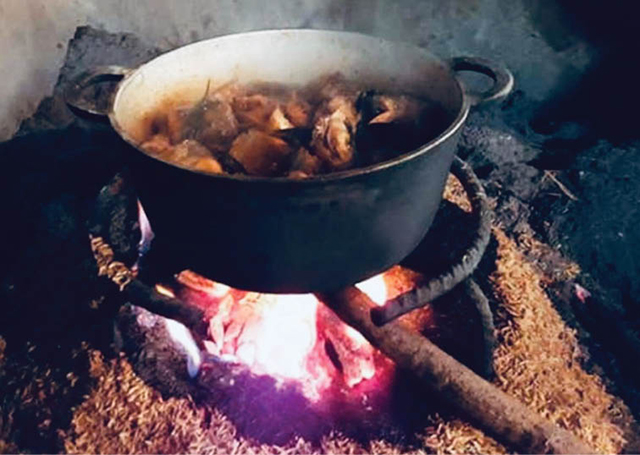
Braised fish before incubated in husks
Since the day when my aunt became a daughter-in-law in my grandmother's house, there had appeared in the menu the new dish of braised fish incubated in husks that she brought from home. Every time she cooked the dish, my mom had to accept being ranked behind.
My uncle said that at the time it was her braised fish that had made him fall in love with her. I thought, not only my uncle, but my whole maternal family were "collapsed" before her good-smelled dish of braised fish incubated in husks.
My house was just a small yard away from his house. Back then, every time I saw smoke soar up to the summit of the jackfruit tree at sunset, I knew my aunt was incubating braised fish.
I remember clearly the exciting feeling early in the morning. As soon as I got up, I grasped the bowl and ran to her house to get my part. It was as if I were a bit late, the whole big pot of fish would be consumed by my uncle and his children.
I also liked sitting next to my aunt, watching her carefully sweeping the husks and ash off the iron pot with a small kitchen broom. Before carefully opening the pot, she blew the last time to make sure it was free of husks and ash.
Everyone in the house gathered to watch her opening the pot. Perhaps it was because the good smell of braised fish was too hard to resist. Or they might do so out of curiosity, to see if my aunt was successful.
I still remember my grandmother's exclamations of surprise when my aunt took the lid off the fish pot: “It’s just right. How talented!” My grandmother always said the same thing with her face filled with admiration.
Any kind of fish can be employed to make this dish, whether it is from the field, the river or the sea. Besides fish, various ingredients were in use.
My aunts often added sliced ginger, fresh ginger leaves, shallot, garlic, pepper, chili and a cup of distillers grains to the fish pot besides salt, fish sauce, sugar and burnt sugar for color. Sometimes for a change, she replaced distillers grains by sliced fermented mustard greens or some sliced garden star-fruit.
Before being incubated in husks through the night, the fish was braised on a firewood stove. She said by doing so, the fish would absorb spices and had nice color. Incubating in husks was the hardest step. Too many husks would burn the fish, but it would be tasteless if not enough.
My aunt's fish was always yellow in color with firm and sweet flesh and soft bones. One could feel the hot taste of chili and ginger, the good smell of pepper, shallot, garlic, and especially the warmth of distillers grains. My uncle often said my aunt’s fish was best for those who liked eating whole fish with bones.
When my aunt and her husband moved to the city, the dish followed her away, and my grandmother and my mother cannot make it. Therefore, every year when she comes back home for family death anniversaries, we always ask her to make some for us.
Story and photo: LINH CHI